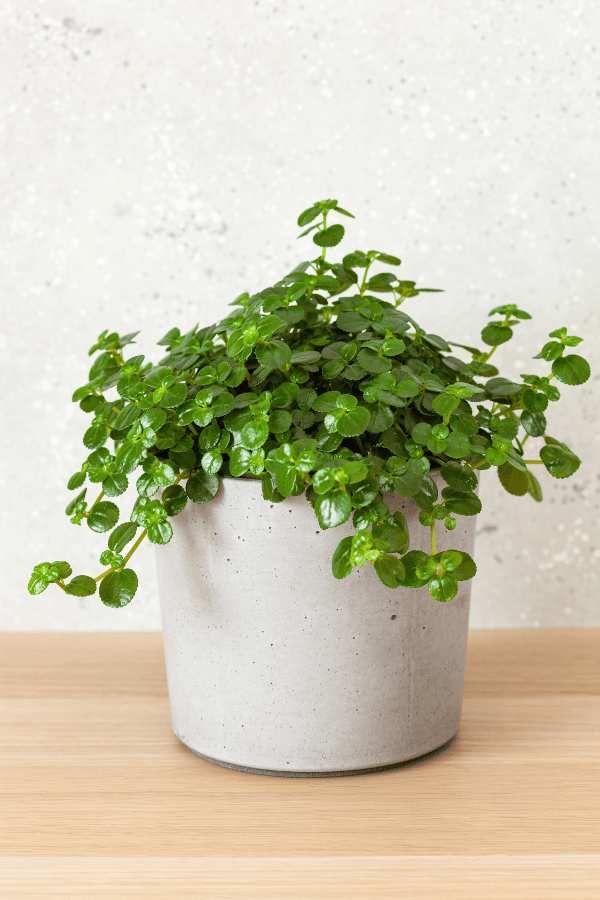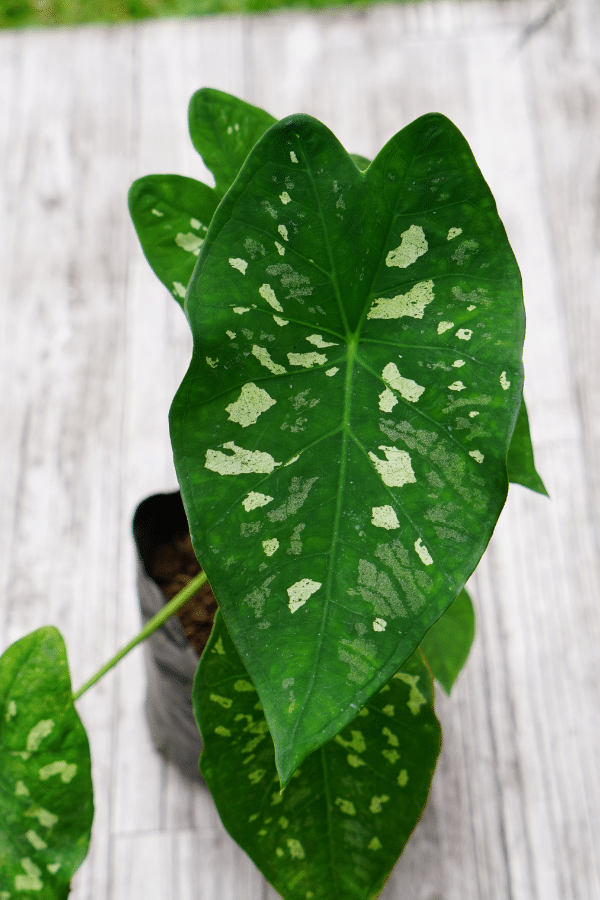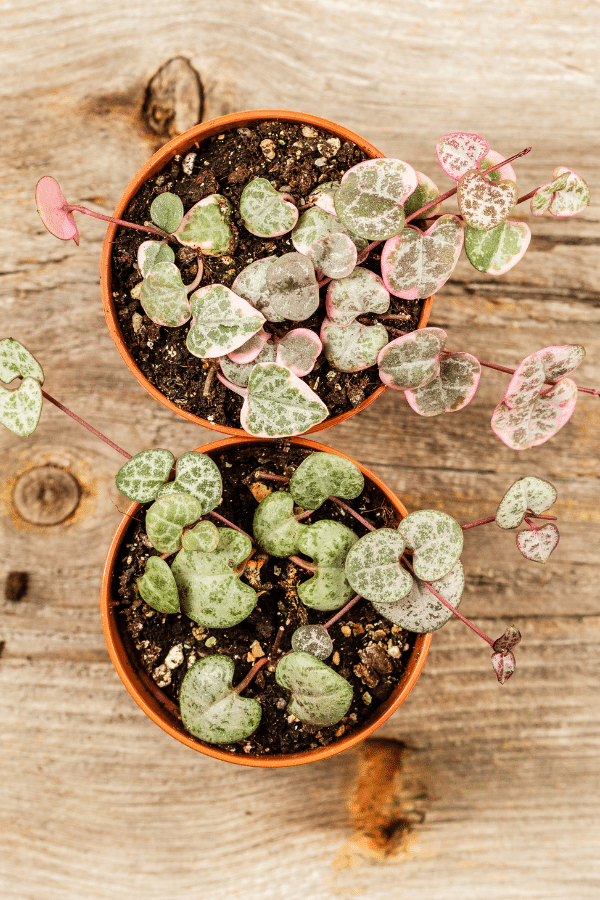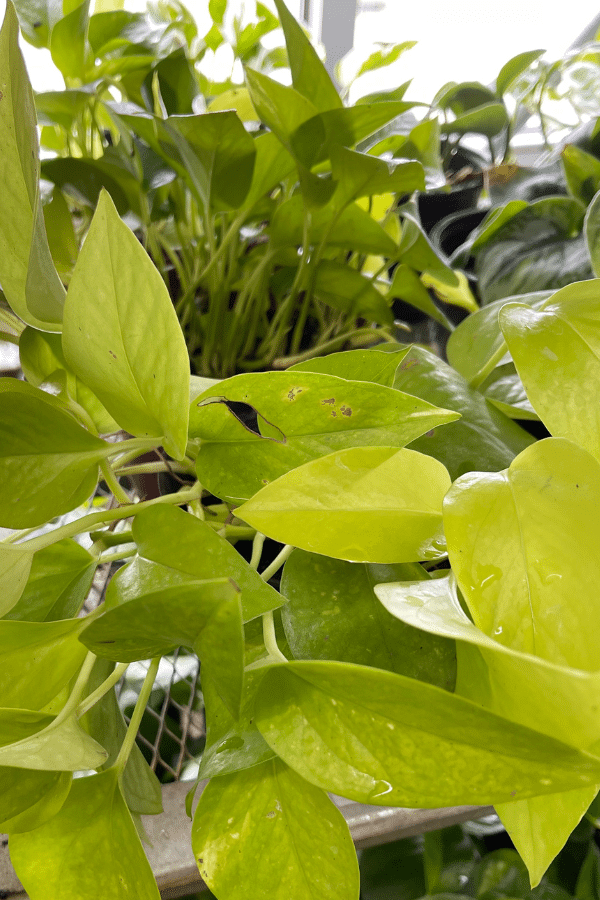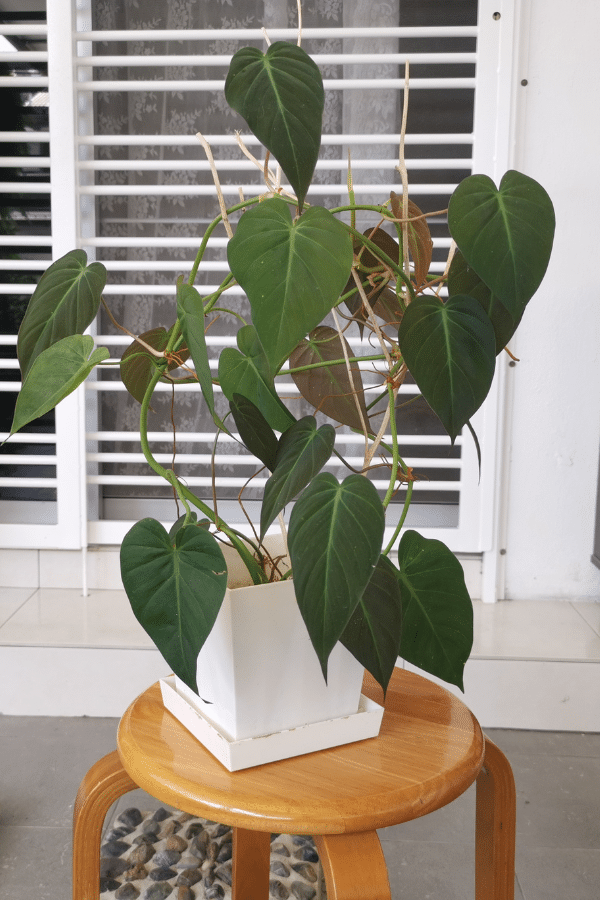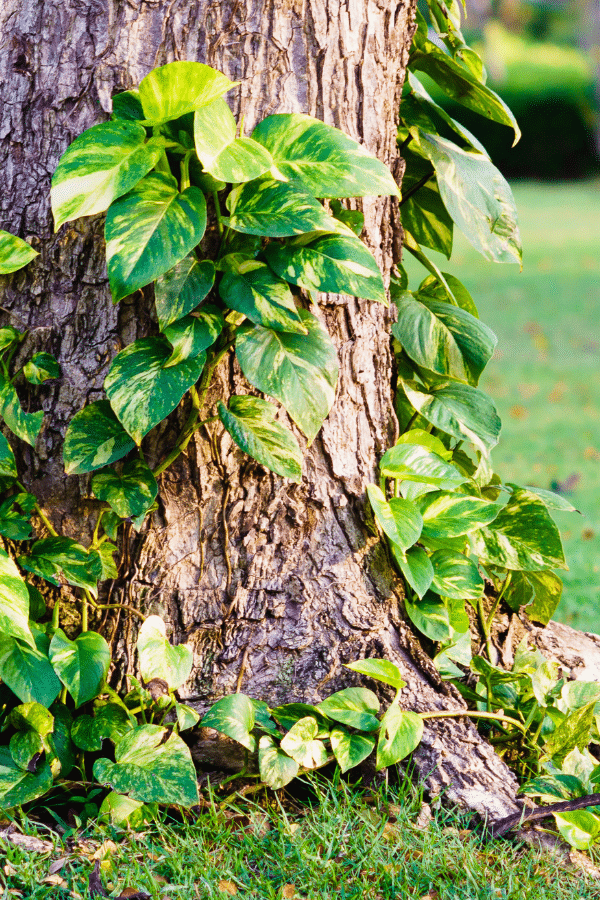Peperomia Obtusifolia
Scientific Name: Peperomia Obtusifolia
Common Name: Baby Rubber Plant
Peperomia Obtusifolia care is an easy Peperomia to grow and care for. If you want a houseplant that trails with thick intriguing leaves, a Baby Rubber Plant may be for you.
To give this Peperomia plant the best care, it requires well-draining and well-aerated soil, allow the soil to dry out in between waterings, provide it with bright indirect sunlight, temperatures ranging from 65-75F, and average humidity levels.
Quick Care Overview
| Common Name | Baby Rubber Plant, American Rubber Plant |
| Scientific Name | Peperomia Obtusifolia |
| Family | Piperaceae |
| Origin | Caribbean, South Florida |
| Growth Rate | Fast |
| Identification | Round dark green thick leaves with trailing stems |
| Height | Up to 12 inches in height |
| Soil | Well-draining soil |
| Water | Allow top two inches to dry out completely before watering |
| Temperature | 65-75F |
| Sunlight | Bright indirect sunlight |
| Toxic to Cats & Dogs | No |
| Toxic to Humans | No |
| Pests | Mealybugs, spider mites |
| Diseases | Root rot |
Below we will dive deep into this Peperomia Obtusifolia care guide.
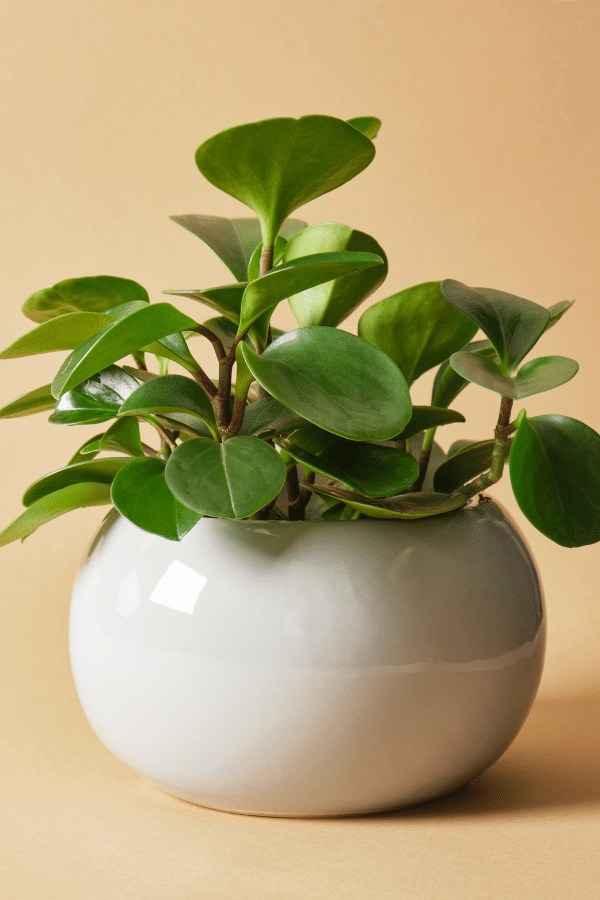
Peperomia Obtusifolia History
Tropical evergreen Peperomia Obtusifolia, otherwise known as the American Rubber or Baby Rubber Plant, is a thick foliaged houseplant from the Piperaceae family that loves to trail. This plant is closely related to the black pepper plant.
Peperomia Obtusifolia Identification
Peperomia Obtusifolia presents with round, dark green succulent-like glossy foliage attached to trailing stems. Variegated varieties have white borders on the edge of their leaves.
Peperomia Obtusifolia Growth Facts
This fast-growing plant may grow up to three feet per year.
How Big Does a Peperomia Obtusifolia Get?
Peperomia Obtusifolia may grow up to 12” tall.
Peperomia Obtusifolia Care
The Baby Rubber Plant is an excellent choice for beginners and is easy to care for. As this plant’s foliage retains water, it is okay with a bit of neglect. Just watch out for overwatering. Peperomia Obtusifolia is particularly sensitive to root rot and other overwatering-related issues.
Peperomia Obtusifolia Soil
Peperomia Obstusifolia prefers rich, well-aerated, well-draining soil. An excellent growing medium is a combination of peat moss or coco coir and perlite. Alternatively, you may add perlite or pumice to a quality commercial potting mix.
Peperomia Obtusifolia Fertilizer
Your Peperomia will benefit from a monthly feeding during the warm months of spring and summer. Select a balanced liquid fertilizer and ensure that you follow all label instructions. This plant will not need to be fertilized in fall and winter.
Peperomia Obtusifolia Watering
Peperomia Obtusifolia does not require frequent watering and will even tolerate some drought periods. It would be best to allow the top 2″ of your soil to dry out completely before rewatering. Watering should be reduced to about once every two weeks, depending on growing conditions in the cold season. You should note that it is not recommended to splash water on the foliage of this plant as it may induce fungal issues if the leaves stay wet too long. Instead, try to water near the surface of the soil.
Peperomia Obtusifolia Light Requirements
Peperomia Obtusifolia likes to be kept in a bright room and receive a lot of indirect light. Ensure that it is not placed in too intense of direct sunlight, leading to sun scorching of the foliage. Alternatively, if your Peperomia is kept in too low of light conditions, the foliage will become dull, and stems will become leggy. Being placed near an east or western-facing window will be best for this Peperomia. It is also important to note that variegated Baby Rubber Plants will require more light and will tolerate a few hours of direct sunlight.
Peperomia Obtusifolia Temperature & Humidity
Being a tropical plant, Peperomia Obtusifolia likes to be kept in warm, humid temperatures. It will grow wonderfully in average indoor temperatures, between 65 to 75 degrees Fahrenheit. You should never expose your baby rubber plant to temperatures below 50 degrees Fahrenheit, as this may cause permanent damage. Additionally, it would be best if you attempted to keep your Peperomia away from large fluctuations in temperature, which may shock the plant. Do not place your Baby Rubber Plant by heaters, AC units, cold windows, or drafts. Peperomia Obtusifolia likes being grown in humidity levels around 50%. You may increase the humidity in your home by installing a humidifier, pebble tray, or placing tropical plants close together to create a microclimate.
Repotting Peperomia Obtusifolia
Peperomia Obstusifolia should only be repotted every 2-3 years during the spring. When repotting, try not to disturb the roots to reduce shock. Select a pot that is 1-2” larger than the previous pot, repot your Baby Rubber Plant, refresh the soil, tamp lightly, water thoroughly, and place in indirect light.
Peperomia Obtusifolia Maintenance & Pruning
Being a fast grower, your Peperomia will need to be pruned every year to encourage a bushy shape and maintain a uniform shape. You should prune back your baby rubber plant every spring using sharp, clean shears. The cuttings may easily be used to propagate more baby rubber plants.
Peperomia Obtusifolia Propagation
Peperomia Obtusifolia may be quickly propagated through stem cuttings, and it is easy to do after pruning. To propagate your Peperomia, simply take cuttings at least 3-4″ long by cutting above the leaf node with sharp, clean shears. Next, remove the bottom leaves, place the cutting into potting mix or water, and keep it in indirect light. The cutting should develop roots within a few weeks.
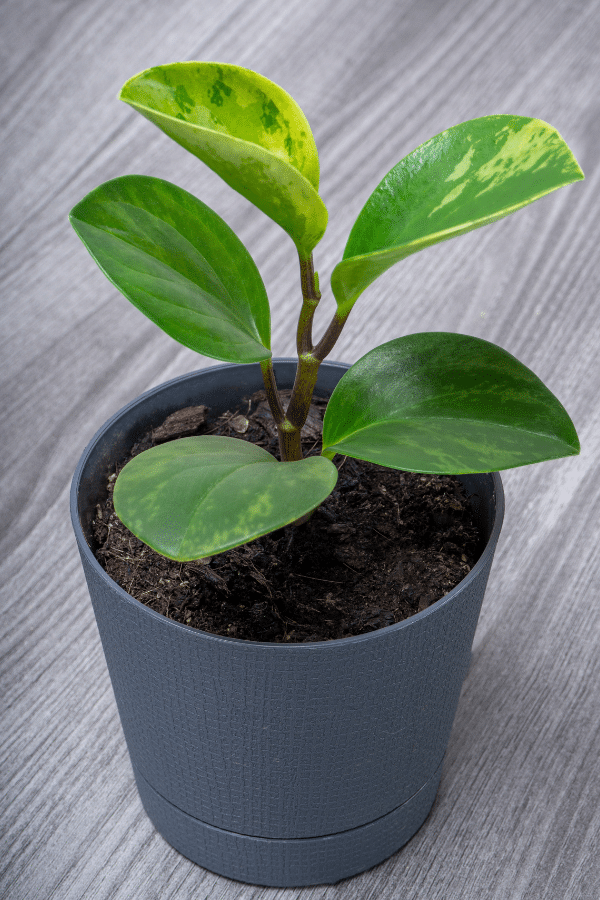
Peperomia Obtusifolia Toxicity
Although Peperomia Obtusifolia is not toxic to humans, cats, or dogs, this plant should never be ingested.
Toxicity to Humans
Peperomia Obtusifolia is not considered toxic to humans. However, it should not be ingested.
Toxicity to Cats & Dogs
The ASPCA does not recognize Peperomia Obtusifolia as toxic to cats and dogs. However, you should try to prevent your pet from eating this plant not to cause any damage to the plant or stomach upset to your animal.
Peperomia Obtusifolia Problems
Peperomia Obtusifolia Leaves Turning Yellow
The foliage of Peperomia Obtusifolia may turn yellow due to insufficient lighting, underwatering, or overwatering.
Peperomia Obtusifolia Leaves Turning Brown
Leaves of your Baby Rubber Plant may turn brown due to overwatering. Ensure that you do not overwater your plant and that you soil is well-draining.
Peperomia Obtusifolia Diseases
Peperomia Obtusifolia is not prone to any specific plant disease but may be affected by issues such as root rot due to overwatering.
Peperomia Obtusifolia Pests
Like many indoor plants, your Peperomia may become infested by indoor house pests like mealybugs or spider mites. Isolate your plant and treat it with a pesticide upon identifying an infestation. Alternatively, you may wipe your plant’s leaves with a 4:1 solution of water and rubbing alcohol weekly to eradicate pests.
FAQ
Is Peperomia Obtusifolia a Succulent?
The baby rubber plant is not a succulent, but it has succulent properties in which this plant stores water in their leaves and stems. Overwatering is common in this plant because of this so be sure to let it dry out in between waterings.
How Often Should you Water Peperomia Obtusifolia?
Water Peperomia Obtusifolia when the top few inches of soil have dried out.

